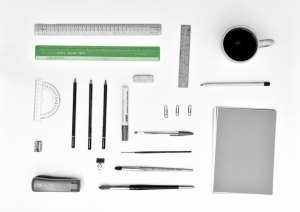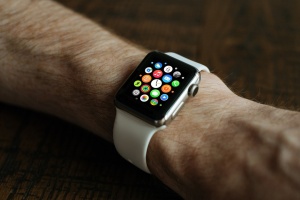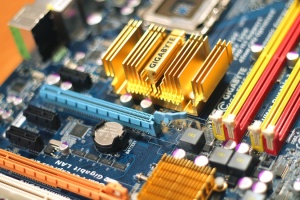We live in a very advanced, technological age. Humans have created electric cars and are planning a trip to Mars. It is incredible to see how people are getting fit and healthier with recent advancements in sport, science, and nutrition.
This time of year brings us “doorbusters” and savings galore on the latest gadgets and gizmos (Fitbit, Garmin, Apple Watch) to help us reach our fitness goals.  These devices are new, exciting, and mean a lot to those we give them to. However, just buying a device may not be the solution to helping yourself or others to fulfill a new year’s resolution.
These devices are new, exciting, and mean a lot to those we give them to. However, just buying a device may not be the solution to helping yourself or others to fulfill a new year’s resolution.
Fitness devices do a lot for us: thinking, computing, recording, and graphing data, giving feedback, setting new goals, and telling us to pick up the pace. Yet, overlaid on all of this fancy tech is behavioral technology. It may sound odd, but yes, there are specific, scientific principles that describe how our behavior is affected. These principles affect our behavior everyday, including the times related to exercise and general physical activity.
This holiday season many of us will buy fitness devices for loved ones or receive one ourself. Here are 5 questions that behavioral tech can ask about fitness tech to uncover if and when such devices are useful.
5 Questions Regarding Fitness Tech
1. Is there motivation to begin with?

For the fitness tech owner, have they expressed interest in some type of physical activity (running, lifting weights, cycling)? Are there specific goals that are important to them? Do they want lose weight? Run more miles? Lift more?
There may be people that lack motivation, and a new fitness tracker could indeed get them going. That is, simply wearing a new device could increase the likelihood that they become more active, talk or read about exercise, and make time to workout. Without motivation, the device may be left unused or unopened.
2. How are things without a new device?
Devices and the apps they come with are loaded with various logins, dashboards, and ways to track data. So many things are monitored: step count, heart rate, calories burned, calories consumed, intervals, pace, duration, and so on. Along with question 1, it may be helpful to pick just one of those data sets (steps, pace) and see how things are going without buying a device first. For example, if you are concerned with running 10 miles a week, log your miles in a notebook or on the computer. Simply writing progress down may be enough to promote more exercise. Sure, this is more effortful, but may save yourself money (finding out the device may be unnecessary to begin with).

The above is an important consideration because we all need to know what our starting point is (establish a baseline). We establish a baseline by answering more specific questions like: What do I weigh now? How far do I walk each day? How fast can I run a mile?
Sorry smart device companies, we can do most of these calculations with a pen and pencil. But, yes, they are great at calculating many things at lightning speed. With these questions in mind, we move to question 3…
3. Can you change only 1 thing?

Seeing improvements in our health is exciting. And knowing what is responsible for that change can be even more beneficial to future progress. By no means am I alluding to any secret sauce, but changing too many things at once (new tech device, training style, work schedule), may leave us unsure of what was responsible for the improvements in our health. And, may falsely, lead us to believe that giving someone a smart device was the only reason someone’s health improved (when in fact many things changed all at once.) The fitness device is just one piece of the puzzle.

In addition, by changing just one thing at a time, we can start to slowly tinker different things in our life that are aligned with personal health and fitness goals. Essentially, you want to do more of what works and less of what doesn’t. So, will buying somebody a popular activity tracker get them more active? Or does it not make a difference at all? Change that one thing and find out!
4. What new things happen when I am more active?


5. Is the device necessary for long-term success?

So now that we are wearing a new device, how long do we need to keep wearing it? During the whole day? Only during training? For the rest of our lives? Does wearing the device contribute to long-term success?
We covered both antecedents (before behavior) and consequences (after behavior) in question 4. But, from the perspective of wearing new tech devices, we can imagine an activity equation like so:
Person + Environment + Device + Consequences = Results
What combination will produce the desired results? On the contrary, would that person’s exercise routine and results persist if they stopped wearing the device? Do you even need the device at all and can get by with just consequences? Leaving you with this activity equation:
Person + Environment + Consequences = Results
If this is the case, then the fitness devices may be nothing more than a fashion accessory. This is a missing component in any fitness device advertising campaign. Companies seldom, if at all, address how long you need to wear the device or when to stop wearing it as you begin reaching fitness milestones. Companies sell products…of course they want you to wear their products all the time.
Conclusion
I love new tech toys just like the next person, but there is more to consider than just which device is the coolest, latest, or a good deal. We can determine how effective new fitness tech is by answering the above 5 questions:
- Is there motivation?
- How are things without a new device?
- Can you change only 1 thing?
- What new things happen when I am more active?
- Is the device necessary for long-term success?
By the time you have read this article, “Black Friday” may have passed or started last Monday. However, these questions can be asked any time of the year. We are now armed with 5 questions when incorporating fitness tech into our lives. The answers to theses questions will allow us to be more deliberate in our actions when it comes to living a healthy life.




Pingback: 2015 in Review: BehaviorFit’s First 5 Articles | BehaviorFit
Pingback: 2015 in Review: BehaviorFit’s First 5 Articles | BehaviorFit
Pingback: How I Used The Apple Watch For Fitness: What I Liked, and What I Would Fix | BehaviorFit